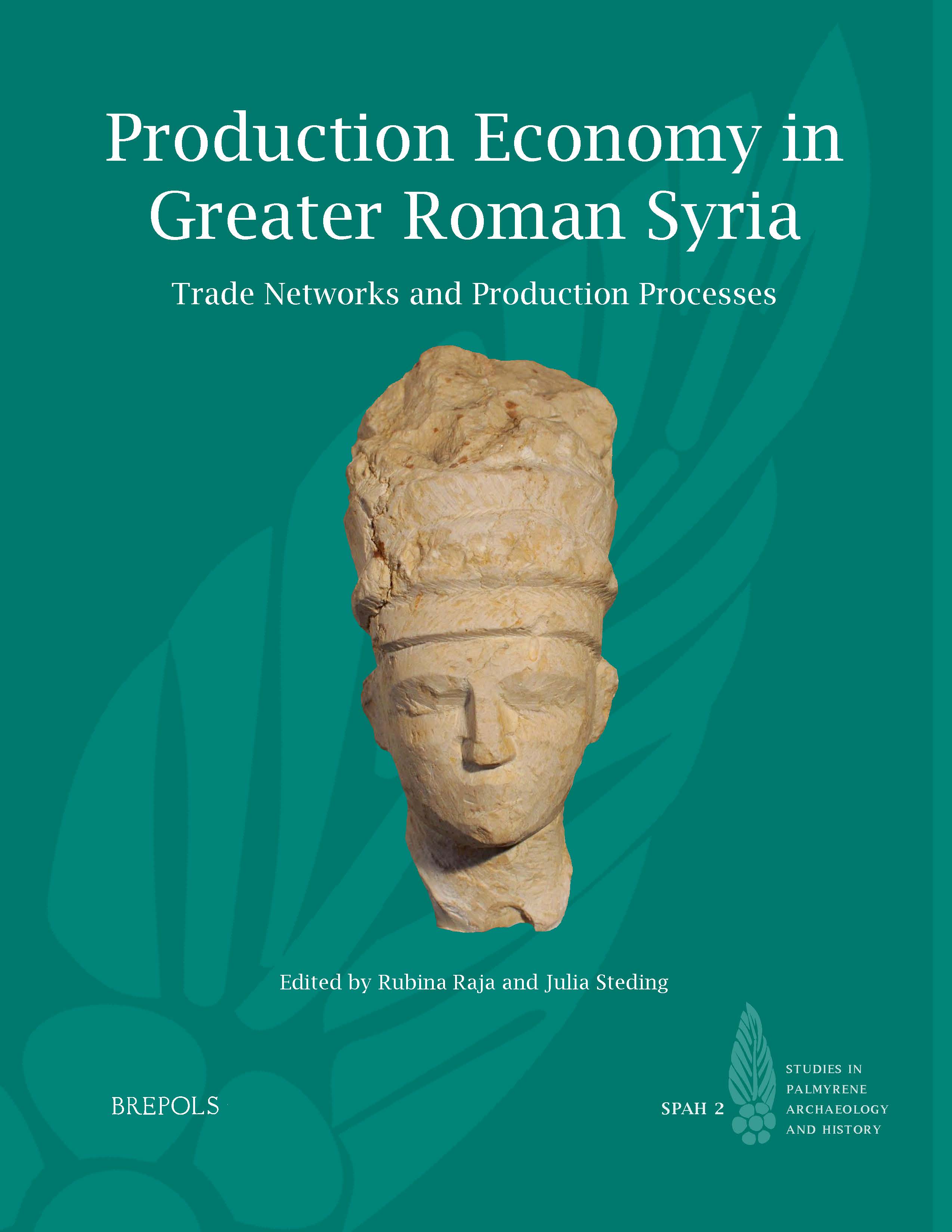Production Economy in Greater Roman Syria: Trade Networks and Production Processes
New volume in the book series “Studies in Palmyrene Archaeology and History”, edited by Centre Director Professor Rubina Raja and Research Assistant Dr. Julia Steding.

Raja, R. & Steding, J. (eds.) (2021). Production Economy in Greater Roman Syria Trade Networks and Production Processes, Studies in Palmyrene Archaeology and History 2, Turnhout.
In 2017 and 2018, the Palmyra Portrait Project invited a group of international researchers to Aarhus University, to discuss the topic of Production Economy in Greater Roman Syria. The questions on stone carving in antiquity are not new, but there is a notable lack in the research on limestone carving and on sites that did not belong to the large production centres. A small number of papers and books have been published, focusing on the carving techniques of the Greek world or solely one of the addressed topics in this volume. To bring all of the research together and add new insight to an understudied area within classical archaeology, this volume combines studies on workshops, production and carving techniques, the provenancing of stone and the production economy of Palmyra and other sites in the region of Wider Roman Syria. Furthermore, it addresses trade networks and their functioning, highlighting the role of urban centres.
From Palmyra in the Syrian Desert to Asia Minor: Production Techniques and Trade Networks
In the first part of the book, the production of the funerary portraiture of Palmyra covers different parts of the production process: the carving techniques, the polychromy, as well as the place of carving. The second part focuses on the quarries and quarrying techniques in Palmyra as well as Baalbek. Thereafter, a number of papers address the marble and limestone used in Palmyra and other cities in Roman Syria, raising the question of how these were provided with the stone for the funerary reliefs and their architectural projects. Some papers extend into questions on the general organization of stone trade; in Syria and beyond. One paper is dedicated to the possibilities of different provenancing techniques to explore the origin of stones. The last part of the book is moving the focus to Asia Minor and Northern Syria; to gain more insight into sculptors elsewhere, a paper on Aphordisian artists is included, as well as a paper on the rock-cut chambers in Commagene and Cyrrhestice.
The book provides a comprehensive overview of the different approaches to explore production techniques, patterns of production and quarrying, sculptors, painters, and the organization of trade networks. It is an excellent addition to the research on Greater Roman Syria, its portraiture and architecture, and, at the same time, covers the important topic of networks and trade relations.
Research on Palmyra at Aarhus University and UrbNet
The new edited volume should be seen against the backdrop of two research projects. The Palmyra Portrait Project, directed by Professor Rubina Raja and funded by the Carlsberg Foundation from 2012 to the end of 2020, explored the funerary portraits from Palmyra, which showcase both Roman and local traditions. The project gave a fascinating insight in the way Palmyrenes viewed themselves as well as their city. The corpus collected by the Palmyra Portrait Project currently holds about 4000 portraits and will be published in 2022.
The project Circular economy and urban sustainability in Antiquity builds on the data collected in the Palmyra Portrait Project, and it is also directed by Professor Rubina Raja and funded by the Carlsberg Foundation and the Augustinus Foundation. The project aims to provide new perspectives on the ancient economy of Palmyra and will shed light on long-term mechanisms and developments in human societies.
Book Series
Production Economy in Greater Roman Syria: Trade networks and production processes is the second publication within the new double-blind peer-reviewed book series Studies on Palmyrene Archaeology and History (Brepols), initiated by Rubina Raja. The book series will provide a stage for edited volumes and monographs on the city of Palmyra and draw together international research on areas such as archaeology, history, historiography, and cultural heritage.
Links
Read more about the new publication on Brepols Publishers' website here.
Read more about the new book series Studies in Palmyrene Archaeology and History here.
Read more about the Palmyra Portrait Project here.
Read more about the Circular Economy and Urban Sustainability in Antiquity project here.
